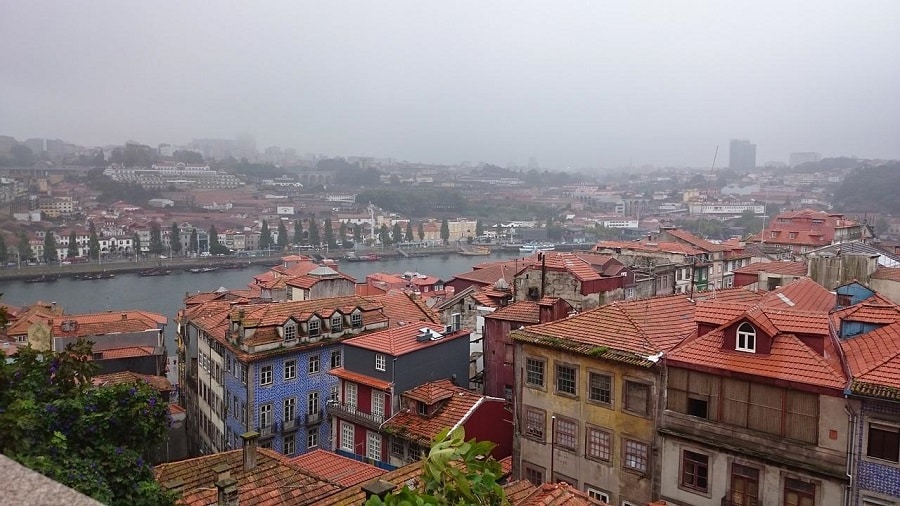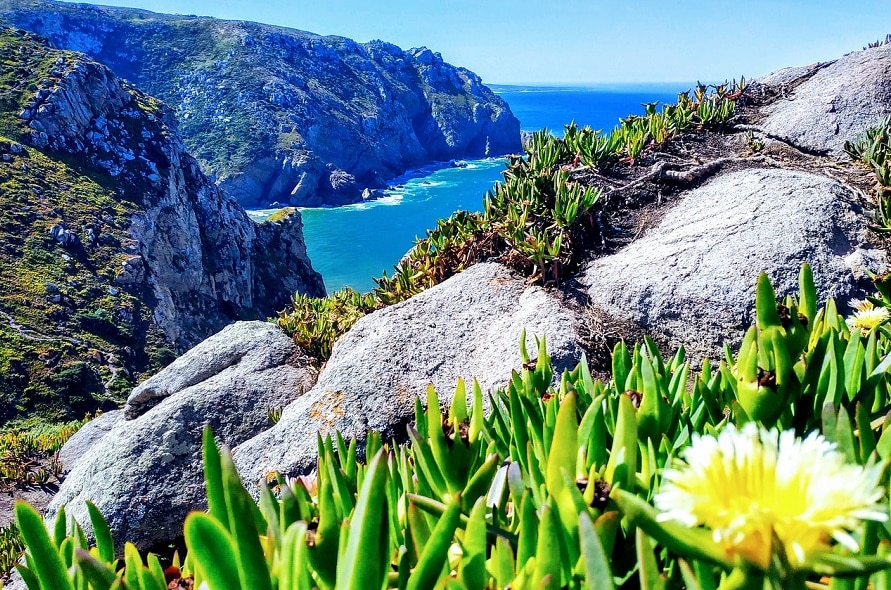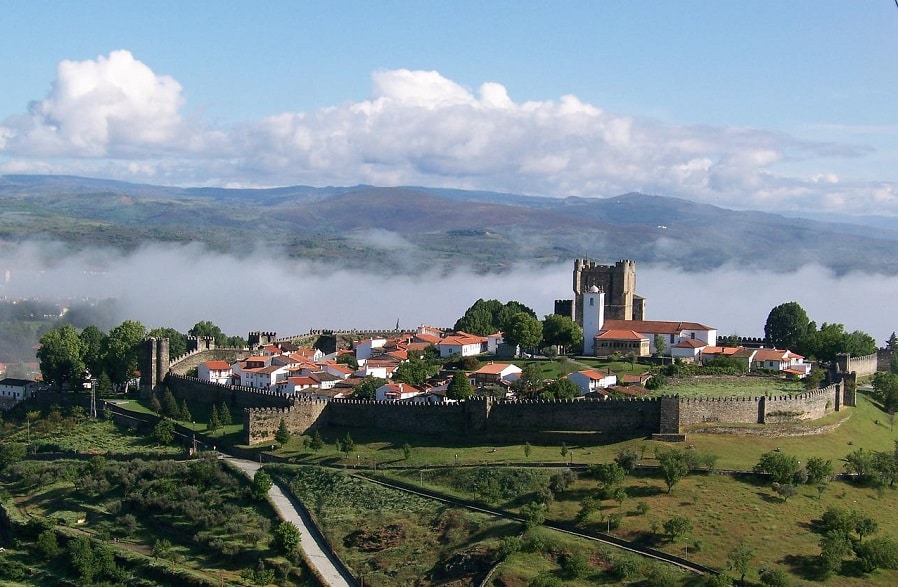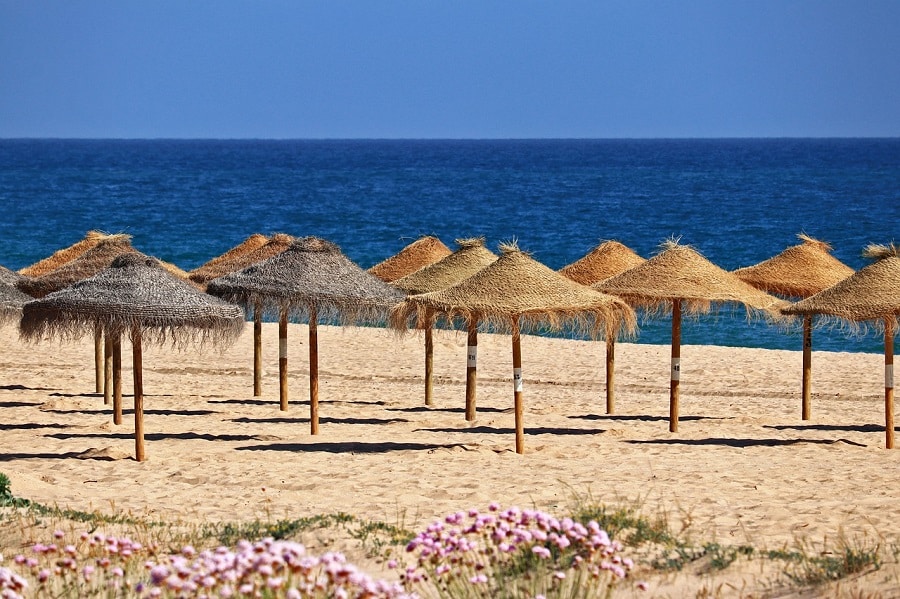For many who are planning move abroad, weather is a big factor. As far as the weather is concerned, Portugal is listed as one of the countries with the best year-round climate. In fact, four in five (83%) expats in Portugal see the climate as one of the biggest benefits of living in the country. In general, the weather in Portugal is characterized by very hot summers, beautiful warm spring and autumn months, and wet winters. Weather in Lisbon ranges from as high as 100 F in July to January temperatures in the 50’s F.
What is the average weather in Portugal like?
Portugal has a Mediterranean climate. In the summer, the temperature becomes increasingly hot and often reaches the high 90’s F by July and August. Summers are typically dry with relatively low humidity.
January, February, November, and December are the coldest months of the year with the least sunshine. By European standards, winters in Portugal are quite mild. However, it can get very wet, foggy and chilly, with strong winds along the coast and further up North.
Portugal’s weather by region
Portugal may be a small country, stretching only about 350 miles from North to South, but there are big differences when it comes to the climate within its borders. The country can be divided into five different climatic areas, so anyone relocating to Portugal is sure to find a climate that suits their unique tastes.
Lisbon weather, Portugal’s capital, is the definition of warm and sunny weather throughout the year. July is the hottest month in Lisbon with an average temperature of 74°F, while January is the coldest at 52°F on average. With the great year-round weather, an average of more than 300 sunny days a year, Lisbon’s climate is the most popular of all cities among expats.
The top choice for retirement in Portugal is the Algarve, partly because it is famous for having the best climate in Europe. This region boasts the most days of sun but is never unbearably hot and seldom humid. Winters in the Algarve are also moderate, and the temperatures are a pleasant 63°F with an occasional rainy day.
Porto, Portugal’s second-largest city, has comfortable, dry, and mostly clear summers, while its winters that are cold, wet and cloudy. Throughout the year, the average temperature in Porto typically varies from 43°F to 76°F.
For some, the Central and Northern regions of Portugal are too unbearably hot in the summer months, while some expats avoid the North because of the cold and wet winter months. However, spring and fall are the most beautiful seasons in Central and North Portugal, producing some of the most stunning natural scenes in the whole of Europe.
Portugal weather by month: A closer look
January
The weather in Portugal in January is never above 60°F, as this is the coldest month of the year. The further you travel up north, the colder it gets, with some smaller towns reaching minimum temperatures as low as 15°F. The coldest region is Bragança district in the Northeast corner, bordering Spain. However, snow often reaches areas further South, including the Castelo Branco region. On the other hand, the South of Portugal has mostly mild temperatures in winter with plenty of sunny days.
February
February is the last month of winter in Portugal. It is an enjoyable month, with the average temperature varying between 48°F and 61°F. However, in the center of Portugal and further up North, temperatures still reach a low of 40°F in February.
March
March is a great month to sightsee in Portugal. While Porto and Northern Portugal remain wet, most of the country is just coming out of the colder and grey winter months and temperatures average around 65°F. In the capital, rain levels drop off in March, with an average of just two inches. Spring officially starts on the 20th of March.
April
In April, average temperatures are between 65 to 68°F in Portugal. Rain isn’t uncommon, but the skies are mostly clear and sunny. Sometimes, in the Southern parts of Portugal, daytime averages can even reach summer-like temperatures.
May
May temperatures in Portugal average between 72°F on the high end and 55°F for the low. Temperatures are perfect for sightseeing around the country to beat the crowds before the typical tourist season starts in June. May is also the start of the cherry season in Portugal. You can buy delicious cherries everywhere at stalls and shops, or attend some of the festivals around the country celebrating this beautiful time.
June
Summer officially starts on the 21st of June. Portugal’s summers are characterized by many dry days with lots of sunshine, up to around 10 to 12 hours daily. During June, temperatures rise steadily with an average of 82.4°F. Beaches and parks are slowly filling up with locals and tourists alike, and with big festivals happening in both Porto and Lisbon, June is a great time to visit the cities.
July
July marks the start of the peak summer season in Portugal. The whole country experiences high maximum temperatures during the day and warm nights. In the far North of the country, it’s warm but not sweltering, with average temperatures hovering around 77°F. Lisbon weather in July is hot and dry, with average highs of 82°F. To the south in the Algarve, highs reach around 86°F and beautiful infinite blue skies.
August
August is considered the hottest month of the year in Portugal. In many parts of the country, the temperature sometimes reaches unbearable levels. This is why many locals head to the coast for a few days or visit the popular praias (river beaches) around the country. Average highs hover around 86°F but may reach up to 100°F in some places. August is the best time to head to the beach for a swim in the ocean, with sea temperatures averaging 68°F.
September
Locals and expats alike agree that September is one of the loveliest months in Portugal. The weather is warm but not as hot as August. And the tourist crowds are finally starting to thin out. During September, the first whispers of fall bring seasonal color and delicious wine to regions like the Douro as the grape harvest starts. In Portugal, autumn officially starts on the 22nd of September.
October
October brings beautiful fall colors and some gloriously clear days. While temperatures in the North can still press highs of 70°F, they can also drop as low as 54°F. Towards the South, the weather in Lisbon Portugal is slightly warmer, with highs of 73°F. On average, October brings around 10 days of rain.
November
November marks the start of winter in Portugal. During this month, the weather can bring more cloudy days and downpours. In the North, high temperatures now max at around 62°F, though they can drop as low as just 48°F. The country gets around 11 to 12 wet days in November.
December
December is one of the coldest months in Portugal. Daytime temperatures average around 60°F while nighttime temperatures can fall to an average of 45°F. December weather also brings some rain and snow to certain areas. The northern region of the country sees more precipitation and colder temperatures during the winter months, while the southern Algarve region is the warmest and driest. For a typical white Christmas, it’s recommended to visit the Serra da Estrela region which gets about two inches of snow in December.
Finding the perfect climate for you in Portugal
Even though Portugal is considered a small country compared to many others in Europe, its climate varies from North to South and from the mountains to the coast. So, if you’re thinking about relocating to Europe’s oldest nation-state, you may be pleasantly surprised to know that it is not an exaggeration that Portugal offers some of the best weather in Europe.







